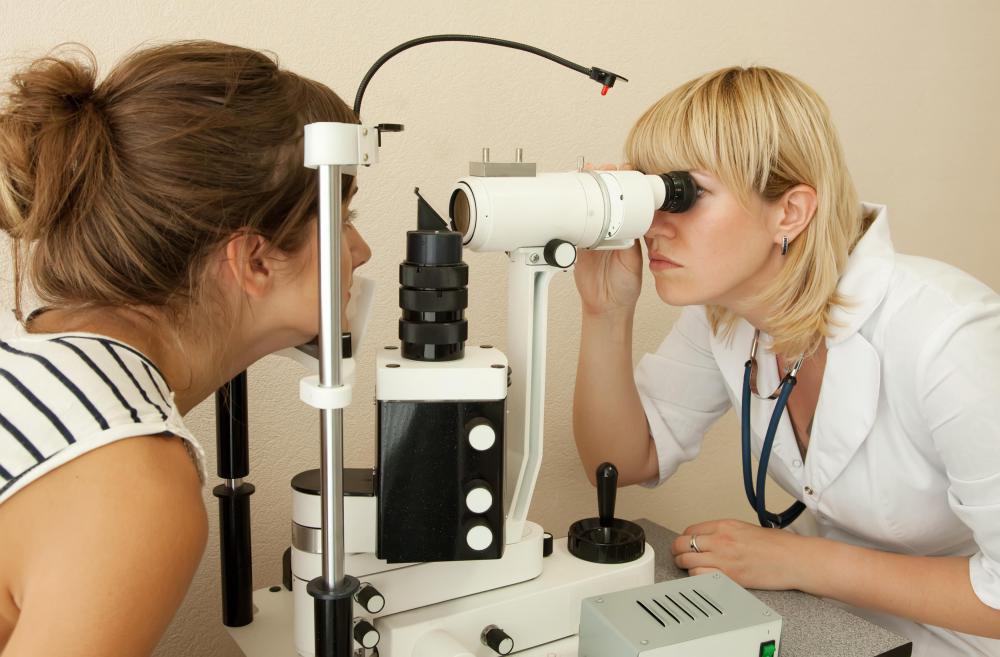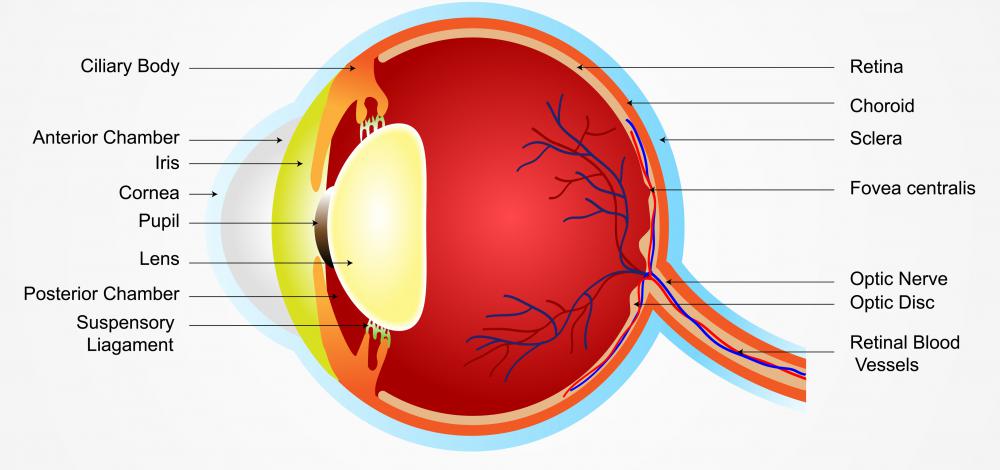At WiseGEEK, we're committed to delivering accurate, trustworthy information. Our expert-authored content is rigorously fact-checked and sourced from credible authorities. Discover how we uphold the highest standards in providing you with reliable knowledge.
What is Retinitis Pigmentosa?
Retinitis Pigmentosa is an inherited eye disease that affects a person's ability to see at night. It also affects their peripheral, or side, vision. This genetic disorder begins with decreased night vision but progresses to lessened peripheral vision, as well. How quickly a person's vision declines is usually related to their genetic makeup, so it varies with different people.
What actually happens is that the photreceptor cells in the retina degenerate and die. As they degenerate, the patient loses more and more vision since the photoreceptors are the cells that capture and process light.

The photreceptor cells are made up of rod cells and cone cells. Rod cells assist people in seeing images from the peripheral view and to see images in dark or dimly lit areas. Cone cells are in the center of the retina and help people to see visual detail and color. Working together, the rod and cone cells convert light into electrical impulses that are transmited to the brain — the actual place from which people "see".

In Retinitis Pigmentosa, there is a gradual breakdown of the rods and cones. The rod cells usually degenerate first causing rod-cone dystrophy, which in turn causes night blindness. Patients with night blindness do not adjust well to dark and dimly lit environments.
As the disease progresses, patients begin to lose their side vision and may experience a circle of vision loss in their mid-periphery with small islands of vision in their very far periphery. Other patients get tunnel vision, as though they were looking at the world through a tube. Some patients maintain a small amount of central vision throughout their lifetime.

Another form of Retinitis Pigmentosa, called cone-rod dystrophy, affects the patient's central vision first. This cannot be corrected with glasses or contact lenses. The sufferer may also lose their ability to perceive color. As the disease progresses, the patients also lose their peripheral vision and develop night blindness.
The disease is usually recognized in childhood and the degree of visual loss varies with the patient.
AS FEATURED ON:
AS FEATURED ON:














Discuss this Article
Post your comments